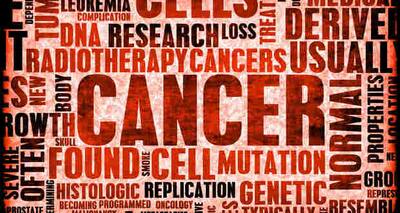Don’t Miss Out on the Latest Updates.
Subscribe to Our Newsletter Today!
Scientists wrap chemo medicines in exosomes, reduce use of medicines for cancer treatment by 50 times

Scientists have made an existing chemotherapy drug more effective with fewer side effects
Cancer treatments are as deadly as the disease with many side effects. Chemotherapy and radiation not only kill cancerous cells but also damage the healthy cells surrounding the cancerous tissue. Scientists have made an existing chemotherapy drug more effective with fewer side effects. They were successful in killing drug-resistant lung cancer cells using 50 times less of the medication than currently required.
The researchers packaged the drug paclitaxel in containers derived from patient's own immune system which protected the drug from being destroyed by the body's own defences, bringing the entire payload to the tumour.
Elena Batrakova from the University of North Carolina (UNC) at Chapel Hill in the US, said that this technique can help doctors reduce the quantity of drug by 50 times and still achieve the desired results with fewer and milder side effects.
Also Read
Researcher Vivek Mahajan from UNC explained that their work is based in exosomes which are tiny spheres harvested from the white blood cells that protect the body against infection.
What are exosomes?
Exosomes are made from the same material as cell membranes and hence the patient's body does not recognise them as foreign. Researchers explained that overcoming the fact that the body recognises plastic based nanoparticles as foreign is one of the biggest hurdles in drug delivery systems. Batrakova also said that exosomes are engineered by nature to be perfect delivery systems. Exosomes from white blood cells wrap the medicine which makes them invisible to the immune system. She further added that exosomes swram the cancer cells, completely bypassing any drug resistance they may have and delivering their payload. (Read: 10 dos and don ts during chemotherapy)
How was the study carried out?
Exosomes were extracted from white blood cells from mice, which were then loaded with paclitaxel. The researchers then tested the treatment, which they call exoPXT, against multiple drug resistant cancer cells in petri dishes. They observed that they needed 50 times less treatment to achieve the same cancer killing effect as formulations of drugs that are currently used. (Read: 10 new antibodies to battle against cancer found)
Advantages of the therapy--
Researchers then tested the therapy in mouse models of drug-resistant lung cancer. They loaded exosomes with a dye with which they could track the progress of the exosomes through the lungs. They found that exosomes could identify and mark cancer cells accurately making them a highly effective diagnostic tool in addition to being a powerful therapeutic. The study was published in the journal Nanomedicine: Nanotechnology, Biology and Medicine. (Read: Here is everything you need to know about latest advances in cancer treatment.)
Image source: Shutterstock


